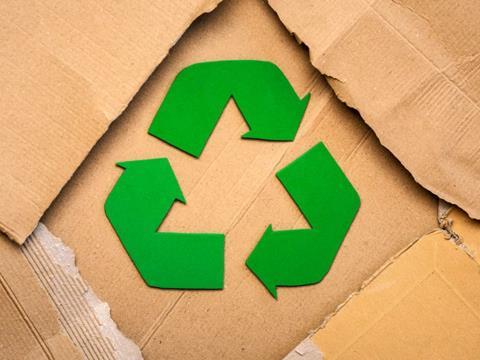
Recycling volumes from Germany’s dual system have increased by 8.4 percent in 2020, Zentrale Stelle Verpackungsregister (Central Agency Packaging Register – ZSVR) has announced.
This was achieved thanks to the progress made in recycling-friendly packaging design. There is a wide range of fully recyclable packaging available that does not compromise on product protection. Mono-material packaging has a leg up when it comes to recyclability. The minimum standard for determining the recyclability for packaging has inspired many different innovations. ‘Marketing has discovered ecological packaging. Looking at recycling-friendly mono-material packaging that also saves material, the minimum standard has made an impact. If it’s a material composite that is tricky to recycle that only looks environmentally friendly because it’s brown, it is a dead-end when it comes to the circular economy,’ explained Gunda Rachut, Chair of the ZSVR, at the annual press conference with the German Environment Agency (UBA).
International producers, new registration requirement and marketplace requirements
The amended version of the Verpackungsgesetz has shaped 2021. In the first implementation phase, a way for international producers to instruct an authorised representative in Germany was integrated into the LUCID Packaging Register. This was meant to guarantee that statutory obligations were met. Using the Electrical and Electronic Equipment Act (Elektrogesetz) as a model, the legislature hopes to substantially increase compliance amongst international producers. From 1 July 2022, further new provisions will enter into force: full registration for all types of packaging and responsibility for marketplaces and fulfilment service providers. These changes make it clear that no one is allowed to place packaged goods on the German market if they are not registered. Marketplaces have to ensure that for their sellers. ‘The registration numbers increased considerably in 2021, especially from China. The expanded obligations are geared towards some weaknesses that have been identified: international producers, marketplaces and free riders. By marshalling our resources, we were able to implement the first phase as planned by 3 July 2021. Right now we are working towards a lean implementation of the amended Act for 1 July 2022 so that producers can demonstrate that they are taking their producer responsibility seriously with as little bureaucracy as possible,’ Gunda Rachut said of the current challenges.
Conclusion and outlook
Next on the agenda is to shore up and expand the progress made under the Verpackungsgesetz. New packaging developments have to be integrated into the minimum standard assessment. The annual revision has proved to be valuable in correctly capturing the high degree of innovation. Further opportunities for development will arise as the Verpackungsgesetz is evaluated. ‘The direction is positive. The Verpackungsgesetz has incentivised the developments that were needed. There is no longer any excuse for not making packaging that cannot be avoided a future resource,’ summarised Gunda Rachut.

















